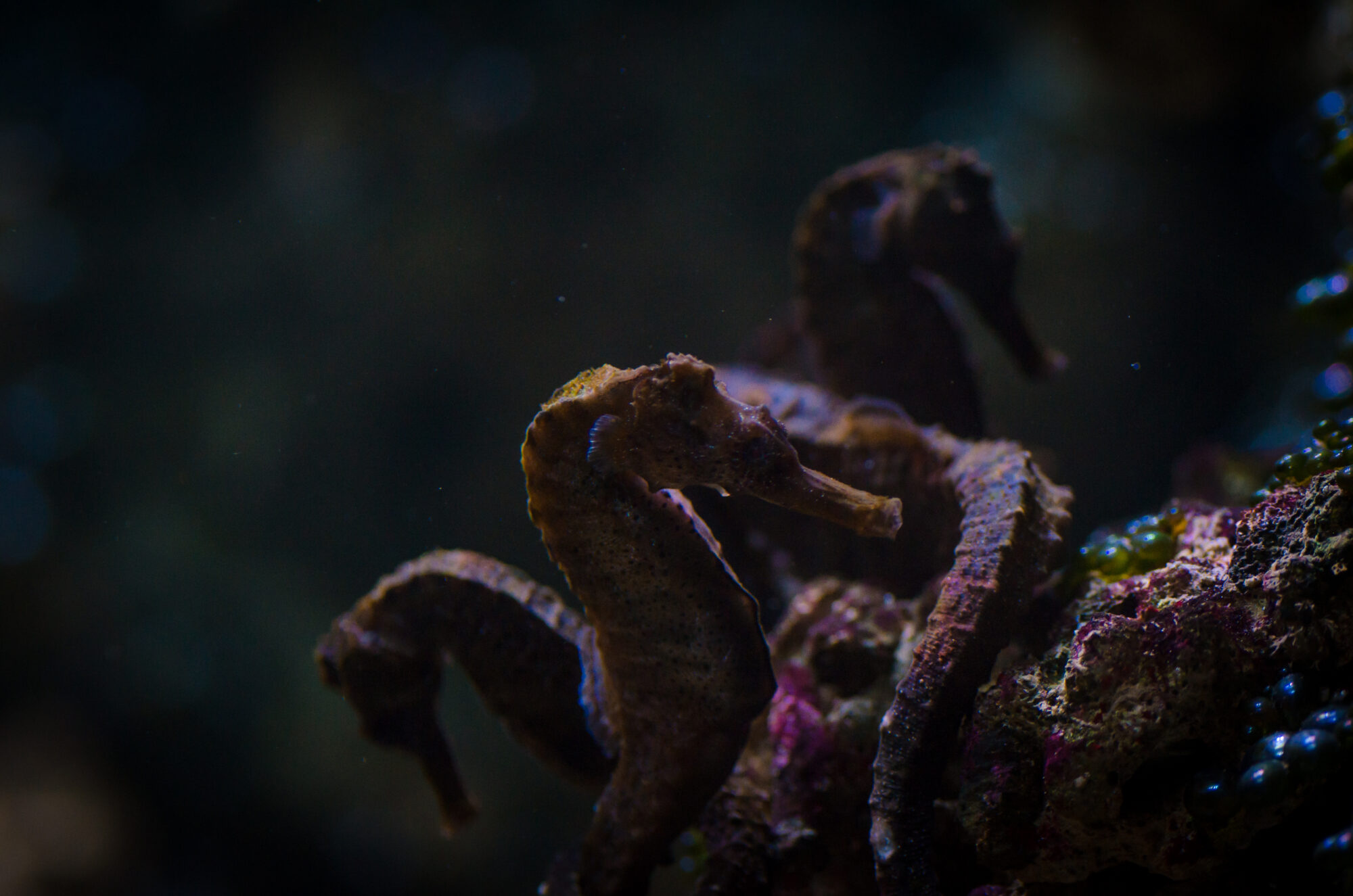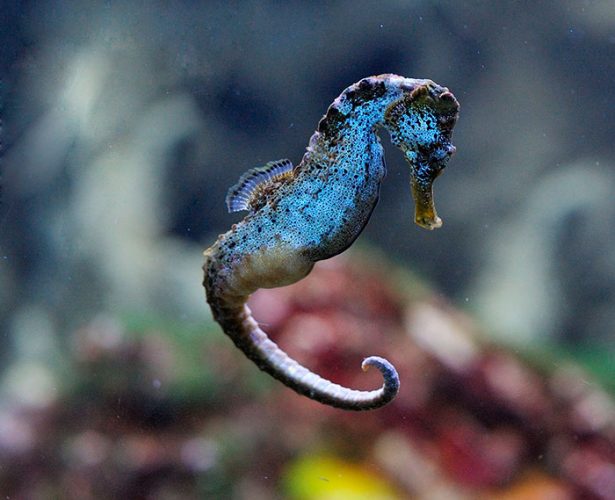Hippocampus reidi
Order: Syngnathiformes | Family: Syngnathidae


It is a coastal seahorse species, which inhabits coral reefs, areas overgrown with seagrass and seaweed, river mouths, and mangroves, from North Carolina in the United States, through the whole Gulf of Mexico and the Caribbean Sea, to Southern Brazil. The young prefer shallow waters, whereas adults can live in depths up to 55 meters. The average lifespan is 2,5 years and its maximum length is 17,5 cm. They are predators and often wait completely still for prey rather than actively chasing for it. Their diet consists of crustaceans, such as shrimp, copepods, gammarids, but also ostracods and nematodes. The juveniles mainly eat insects and the eggs of mollusks and crustaceans. They are poor swimmers, due to their body structure, but they make up for that with their prehensile tails, which can grab onto many different objects. They are active during the day, but they stop swimming when night comes and clatch onto corals with their tails and stay there until sunrise. They most often lead solitary lives, but couples are not a rarity, they are also seen in groups of more than two individuals. When it comes to the coloration, it varies from black to yellow, red, orange and brown, with many white spots, mainly on the tail. An interesting aspect is how quickly they can change coloration to blend in with their surroundings.
Similarly to a chameleon, their eyes move independently, so one eye can look down, while the other looks forward.
As a monogamous species, they couple up for life. During courtship, the male impresses the female with quick color changes and swimming displays. Males take care of the eggs, and they have a special pouch into which the female lays eggs, which are subsequently fertilized by the males. Young seahorses hatch after two weeks. These juveniles are sustenance for large pelagic fish, such as snappers or tunas. The Gdynia Aquarium is proud to have been able to reproduce these seahorses.
IUCN Red List
This is a ‘near threatened’ species. The development of coasts has caused the loss and degradation of their natural habitats, especially mangroves. However, the biggest threat is through bycatching during artisanal and industrial fishing. This species is utilized in regional medicine, the production of jewelry, charms, and amulets, whereas living organisms are sold as aquarium fish.


